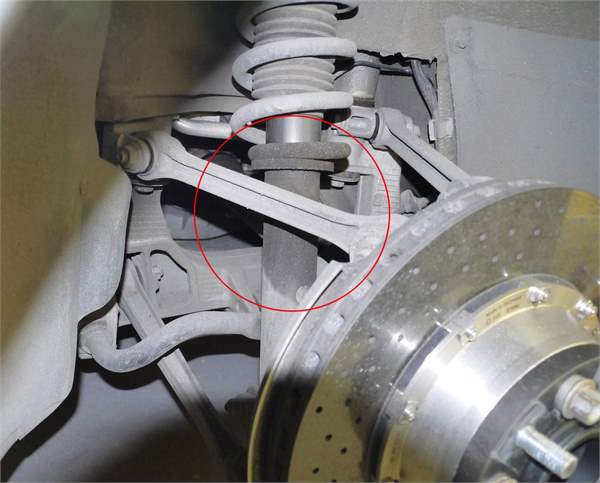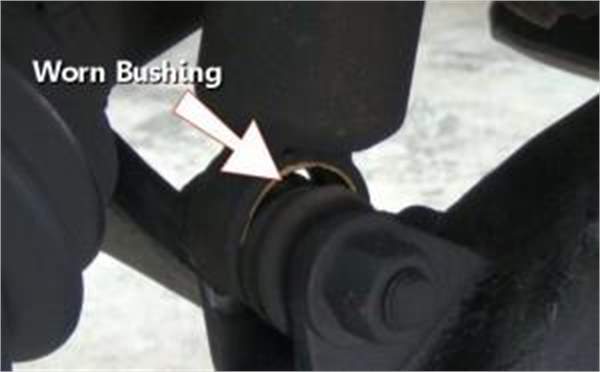Do your shock absorbers need replacing?
While most drivers have heard of a shock absorber. For short they are also called "shocks" or sometimes "dampers". Very few realise what they do and also how safety critical they are. Like all moving parts on a car, a shock absorber can become worn over time. This results in it needing replacing. Knowing when to replace the shock absorber it's not always obvious. How long a shock absorber lasts depends on a huge number of variables. Make/model of car, the mileage driven, and the type of road surfaces driven on. Depending on what quality of damper you fit, 4-5 years seem to be about the average life span of the shock absorber. With that in mind, a typical car might go through 3 or 4 sets of dampers in its lifetime. It's reasonable to expect that you'll have to replace some at some point. Here's our guide to identifying issues with your shocks.
First up: What is a Shock Absorber?
Simply put, the shock absorber controls unwanted movement of the car body. It does this by controlling the movement of the wheels. The springs themselves absorb bumps and changes in the road surfaces. While the damper then control/dampen the movement of the wheels after that. Without them the cars wheels will bounce up and down uncontrollably every time you go over a bump. This is not only uncomfortable but also dangerous! These two things combined will result in the tyres losing touch with the ground. _(1)_(1)_(1)_0a562d.jpg)
A selection of typical front and rear shock absorber designs In effect, it's the job of the shock absorber to keep the tyres in uniform contact with the road. The way they do this varies from car to car, but the principle is the same. In sportier models, the damping is 'firmer', which may feel a little less comfortable. What this means that car body movements are more rigidly controlled. . Most modern cars use telescopic shocks that feature a piston and valve arrangement within an oil-filled tube. They call them hydraulic dampers and as the wheel rises, it shortens the shock. Oil is forced within the shock through small holes in the piston. This slows and controls the movement of the wheel as the spring oscillates. Some more sophisticated shocks have an extra gas chamber within this arrangement. This allows further control and 'soften out' the movement. There are also many different types of adaptive or electronically controlled damping systems. It's possible to Alter the firmness of the damping can on the move to suit the road surface or the driver's preference.
How to Tell if Your Shocks Need Replacing.
As shock absorbers wear they become less effective. For example, the damping becomes less and less. As the effectiveness of shocks degrades it's not always easy for the average motorist to realise this. You can inspect them within the wheel arches for signs of leakage. Oil stains are a clear sign, you should replace the damper ASAP. Wear like this is also an instant NCT/MOT fail. Not all worn shocks leak so don't rely on that method. Scalloped dips in the tyre is another thing to watch for on the tyres edges. Cupping in the technical name for this and though it other worn suspension parts can cause the damage or wear, it is most common with worn shocks. 
The circled area on the shock shows dark discolouration where oil has leaked from the seal That's about it for visual inspection. Next, you need to be aware of unusual noises in the suspension, especially over a rapid sequence of bumps. Audible signs or wear are a rapid, dull thumping sound. This noise is the sound of the tyre whacking up and down on the road. It's not the actual shock itself) Other noises to listen out for are knocks and rattles which could indicate shock bushes or other suspension bushes probably need replacement. 
Other signs of wear
Longer braking distances is another way of Identifying worn dampers. The car nose dive under braking is one sign. Poor cornering is an another. All those things are difficult to assess unless you're aware of your car's dynamic abilities. You need to know what they are like and how they have changed. Saying that, if you think that the car isn't as good to drive, or as secure on the road as it used to be, popping along to a good mechanic to have the shocks tested. A quick and dirty DIY test you can try yourself is to simply push down hard on the wing of the car. Make sure to go quickly and see if it bounces. A working damper will compress, rebound and immediately settle. A damper that has completely failed is likely to bounce a couple of times before it settles again. This is more difficult to find out with modern McPherson strut suspension designs but is still worth a go.
Replacing your shocks.
While replacing shocks is not the most difficult maintenance job on a car, we'd recommend that it's left to the experts unless you're a dab hand with the spanners and you have tools such as spring compressors to hand. (That said we will have a DIY video guide to replacing them in the coming months). Whether you're doing the job yourself or getting a professional to do it for you, insist on replacing the shocks in pairs, across either the rear or the front of a car. This ensures consistent levels of damping across the axle. (An imbalance in damping performance left-to-right greater than 30% will result in an NCT/MOT fail). 
When fitting them, be aware that some shocks are specifically designed for just one side of the car. When ordering new shocks you should be aware that there could be different types that will physically fit your car. For example a Mk5 Volkswagen Golf, like our project car came as a standard hatchback with standard shocks, there was a GTi version with firmer sports shocks and a commercial version with heavy duty shocks all of which look virtually identical and will all fit but will all offer very different handling characteristics so it's important to look closely all the technical details when buying new shock absorbers. We would also recommend that you never, ever fit second-hand shocks.
And finally...
Although you can drive a car on worn shocks, it's not something you should scrimp on, as they are integral to everything the car does, especially braking and turning. On badly worn shocks, braking distances can increase; a car could 'skip' across the road mid-corner over bumps; or it may react in an unexpected manner during an emergency manoeuvre, so at the first sign of an issue, get them replaced. Some of Our Best Sellers : Monroe Shock Absrobers | Koni Shock Absorber | Sachs Shock Dampers